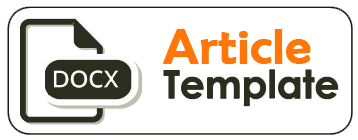EVALUASI KINERJA DRAINASE JALAN SOEKARNO-HATTA KOTA BINJAI
DOI:
https://doi.org/10.32497/wahanats.v29i1.5652Keywords:
Drainage Evaluation, Binjai City, Soekarno-HattaAbstract
Jalan Soekarno-Hatta is located in East Binjai District, Binjai City. Along this road, there is always quite high flooding when it rains. Flood events are usually caused by the intensity of rainfall and less than optimal drainage performance, where drainage should be a system whose function is to channel and circulate air that comes from rain, or seepage experiences damage and sedimentation so that it cannot function optimally. In order to minimize flooding on Jalan Soekarno-Hatta, it is necessary to evaluate drainage performance by reviewing existing conditions, taking into account rainfall intensity values and planned discharge to determine optimal capacity for more optimal drainage performance in collecting, channeling and channeling rainwater. This was done using an evaluative descriptive method with the length, width and depth of the drainage observed at 1630 m, 110 m and 1.27 m. The results were that the selected rainfall intensity value (period 5; year, 2027) was 125.866 mm/hour, concentration time (tc) 184.67 hours, drainage coefficient 0.925 resulting in planned discharge>drainage discharge (Qr>Qs) namely 278102.6 m3/ sec > 31478.6 m3/sec. These results indicate that Soekarno-Hatta's drainage capacity is unable to accommodate large (planned) discharges, resulting in flooding. Solutions that can be applied are reducing sedimentation, increasing the dimensions of the drainage itself or forming biopores.
References
Reno, A., 2019, Kajian Efektivitas lubang Resapan Biopori Dalam Mereduksi Debit Banjir Akibatair Limpasan hujan Pada Perumahan Griya paras Jaya Kota Palembang. Universitas Muhammadiyah Palembang.
BPS, 2022, Binjai Dalam Angka. ISSN: 2337-8638.
Yohana, C., Griandini, D., & Muzambeq, S., 2017, Penerapan Pembuatan Teknik Lubang Biopori Resapan Sebagai Upaya Pengendalian Banjir. Jurnal Pemberdayaan Masyarakat Madani (JPMM), 1 (2), 296-308.
Victorianto, E., Qomariyah, S., & Sobriyah, S., 2014, Pengaruh Lubang Resapan Biopori terhadap Limpasan Permukaan. Matriks Teknik Sipil, 2 (3).
Elsie, E., Harahap, I., Herlina, N., Badrun, Y., & Gesriantuti, N., 2017, Pembuatan Lubang Resapan Biopori Sebagai Alternatif Penanggulangan Banjir Di Kelurahan Maharatu Kecamatan Marpoyan Damai Pekanbaru. Jurnal Pengabdian UntukMu NegeRI, 1 (2), 93-97.
Indriatmoko, R.H., & Rahardjo, N., 2015, Kajian Pendahuluan Sistem Pemanfaatan Air Hujan. Jurnal Air Indonesia, 8 (1).
Menteri Negara Lingkungan Hidup, 2019, Peraturan Menteri Negara Lingkungan Hidup Nomor 12 Tahun 2019 Tentang Pemanfaatan Air Hujan.
Saraswat, C., Kumar, P., & Mishra, B.K., 2016, Assessment of Stormwater Runoff Management Practices and Governance Under Climate Change and Urbanization: An analysis of Bangkok, Hanoi and Tokyo. Environmental Science & Policy, 64, 101”“117. Suripin, 2004, Sistem drainase perkotaan yang berkelanjutan. Andi.
Zevri, A., 2020, Analisis Rencana Tinggi Tanggul Banjir DAS Bangkatan Sebagai Alternatif Pengendalian Banjir Kota Binjai. Jurnal Sumber Daya Air, 16 (2), 63-76.
Downloads
Issue
Section
License
Authors who publish with this journal agree to the following terms:Authors retain copyright and grant the journal right of first publication with the work simultaneously licensed under a Creative Commons Attribution License that allows others to share the work with an acknowledgement of the work's authorship and initial publication in this journal.
Authors are able to enter into separate, additional contractual arrangements for the non-exclusive distribution of the journal's published version of the work (e.g., post it to an institutional repository or publish it in a book), with an acknowledgement of its initial publication in this journal.
Authors are permitted and encouraged to post their work online (e.g., in institutional repositories or on their website) prior to and during the submission process, as it can lead to productive exchanges, as well as earlier and greater citation of published work (See The Effect of Open Access).






